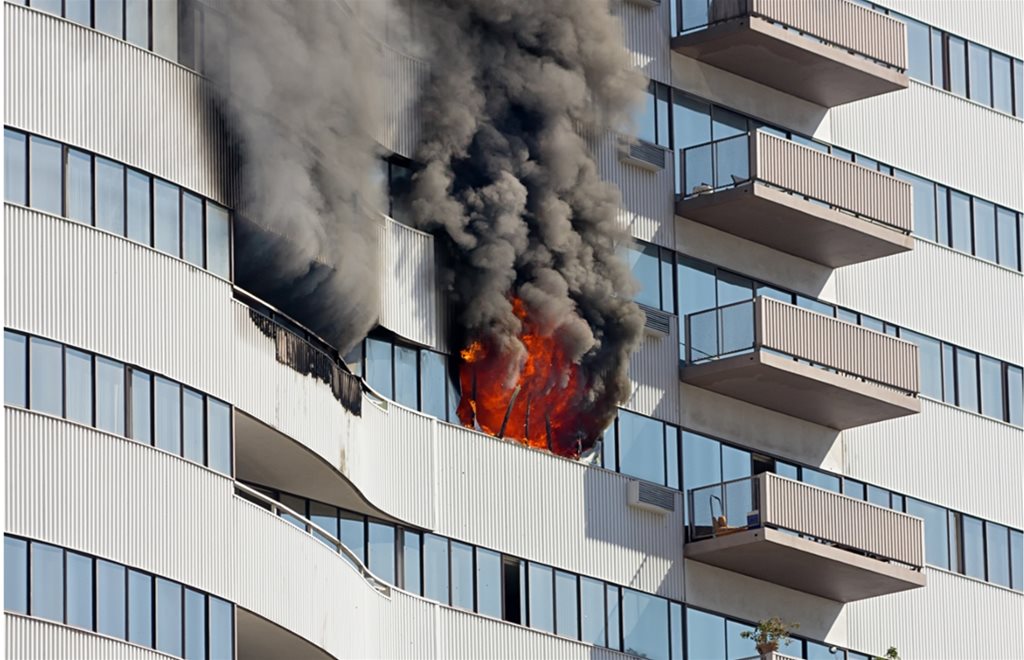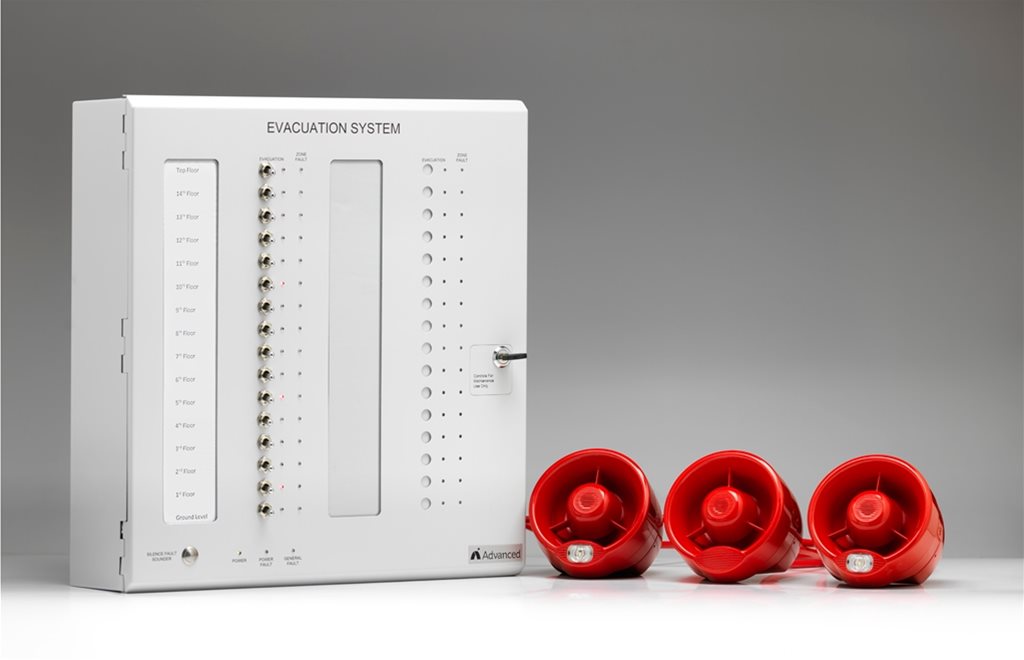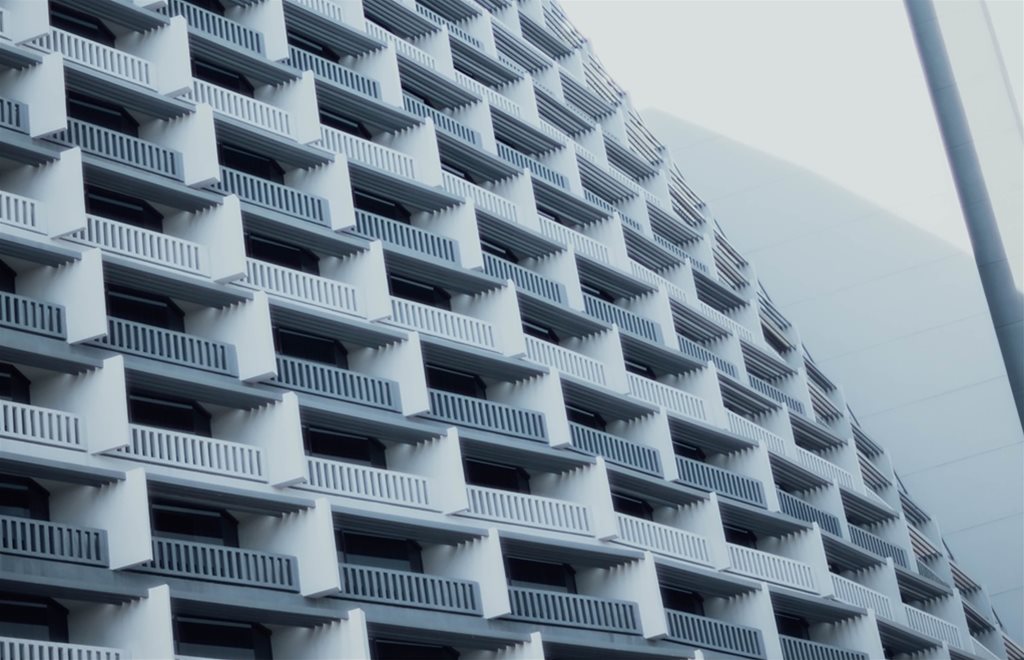Buildings and their uses are changing, and with new evacuation standards, how can technology ensure evacuation safety? Ken Bullock explains
AS OUR buildings and the way we put them to use become more complex, the challenges of safely evacuating occupants also increase. The latest analogue addressable fire panels give fire engineers, specifiers and end users more control and peace of mind than ever before, delivering unprecedented levels of performance and accuracy.
The latest panels’ capabilities stretch far beyond detecting a possible fire and letting everyone know, by making evacuations safer and faster, operating well past the initial activation and integrating with third party building management systems. With the emergence of new standards, emphasis is also placed on an effective standalone tool to assist in the evacuation of a building containing flats, in whatever manner is considered appropriate by fire and rescue services (FRSs).
Design process
Effective evacuation begins at the stage of fire system design. Whether a new build or refurbishment, building use, escape routes, fire compartments and false alarm minimisation should all be considered as an integral part of the wider design and specification process.
An in depth fire risk assessment needs to be carried out and, in the case of larger or more complex buildings, it may include a more detailed evacuation strategy for the site. This should cover factors such as locations of indicating equipment, escape routes, safe areas and people at risk, as well as identifying and addressing any potential barriers to evacuation.
Effective detection
Ideally, evacuation only occurs when a building is in genuine alarm activation, and recent innovations in false alarm reduction aim to ensure this. Panels such as the MxPro 5 from Advanced combine cause and effect programming with human interventions and intelligent detection to confirm alarm signals.
Using complex algorithms in conjunction with an intelligent panel, detectors can operate in different sensitivity modes to confirm an activation, or in combination with other devices – commonly referred to as ‘co incidence’ or ‘double knock’.
After the fire condition is displayed at the panel, the responsible person can physically check if an activated device is a genuine alarm. If no action is taken, the delay expires, or if a predetermined set of conditions are met, evacuation will commence. However, if the alarm was false and the signal has cleared, the responsible person can reset the panel, avoiding an unnecessary evacuation.
Also, the responsible person is able to receive pre warning of potential alarms, notice of validation periods or investigation delays via pagers. An integrated, secure paging system can provide rapid, detailed alerts of fire system signals, allowing them to be rapidly located and investigated.

Smart systems
In a real emergency, the fire system may be managing all manner of devices with a number of involved strategies. This means that the specification of a suitable fire panel and associated components is vitally important for an effective evacuation. The best fire systems are highly intelligent and have the ability to control many operations that are essential to safely protecting occupants and infrastructure.
For a safe and orderly evacuation to be completed, the panel needs to remain operational for long periods in adverse conditions, even as cables degrade or ultimately fail (due to fire, for example).
Processing power is critical, particularly on larger sites where systems that can convey accurate information about the location of an alarm can quickly make use of valuable extra seconds for investigation, verification, evacuation and ultimately firefighting.
EN 54-13 compliant panels will self test components to ensure reliability, while also offering the assurance of fast and efficient operation to aid rapid and efficient evacuation.
Program capability
Programming is the key to meeting the full potential of fire system technology. Using cause and effect, modern fire panels can be configured according to how the whole building is used, or the needs of specific areas or specific individuals. A system should also have the programming capability to manage phased evacuation.
By using cause and effect programming in conjunction with the latest sounders that support recorded messages, or ‘alert’ and ‘evac’ tones, the people most in danger from a fire can be evacuated first. Meanwhile, the flow of other people in the building can be kept at a manageable level and safe escape routes maintained.
Importantly, the panel and its programming must be able to manage this process in dynamic fire conditions with spreading fires and smoke in multiple areas simultaneously.

Evacuation control
Every member of staff should be trained to operate and monitor the fire system, with regular update sessions and fire drills to ensure the effectiveness of the procedures in place. Providing clear, precise information to those responding to a fire signal in a building is key, which is where graphical repeater panels (such as Advanced’s TouchControl) can help.
These use touchscreen technology to display dynamic maps of sites. Many systems will also link with PC graphics systems, including diagrammatic representations of a site to give dynamic information in control rooms.
Code of practice
BS 8629: 2019: Code of practice for the design, installation, commissioning and maintenance of evacuation alert systems for use by fire and rescue services in buildings containing flats is the new code of practice for such systems in flat blocks in the UK, and it applies to new blocks of more than 18m above ground level.
The recommendations in the standard are considered best practice for existing high rise residential buildings as well. It recommends the installation of a dedicated evacuation alert system, intended for the sole use of the FRSs and entirely separate from the building’s fire alarm system. Introduced following recommendations in the first phase report of the Grenfell Tower inquiry, evacuation alert control and indicating equipment (EACIE) is intended for the sole use of the FRS during firefighting and rescue operations.
Evacuation alert systems are designed to facilitate the phased evacuation of an area, floor or building in the safest possible way. The code of practice stipulates that the evacuation alert system should be completely independent of a building’s fire alarm system. This helps to avoid confusion over safe evacuation for residents until the concept and management of evacuation alert systems becomes well established and understood.
All evacuation alert systems need to be planned, designed and commissioned in consultation with the FRS, so it is important to choose a solution that offers flexible design options. For maximum ease of use, evacuation alert panels provide a simple, at a glance overview of the building’s evacuation alert zones, along with LED indication and manual controls for operating evacuation alert devices in each zone.
Housed in a suitably rated enclosure, meeting security rating classification STS 205 for resistance class BR2, the panel from Advanced is accessible only to the FRS. Compatible with both hardwired, radio and or hybrid systems, each panel is designed to support any evacuation strategy without limiting evacuation options, and offers commissioning and servicing via a virtual PC tool.

Intelligible warnings
For larger buildings in particular, an evacuation situation can potentially lead to a great deal of confusion. The intelligibility of mass notification warnings is crucially important, as potentially life threatening situations can occur in situations where messages are unintelligible or misunderstood. Fire system installers need to ensure that any messages are clear and audible, remain synchronised and properly indicate the nature of the incident, while in addition providing clear evacuation directions where necessary.
Research has shown that these alerts are highly effective in a fire situation, and the fire system may well be required to integrate with a voice evacuation system. Such systems are becoming more widespread and are more effective in attracting attention because, when people hear a voice message, they are less likely to automatically suspect a false alarm.
Smoke flow
Given that smoke inhalation kills more people than fires themselves, smoke flow is a major concern, particularly in larger or complex buildings where it is important to ensure that evacuation routes are kept clear. This can be managed via fans and dampers, using either the building’s HVAC (heating, ventilation and air conditioning) system or a dedicated smoke control system to manage airflow through the building in the event of fire.
Sometimes, off the shelf smoke control panels do not offer the best solution in terms of effectively managing how smoke and fresh air travel within a building. In cases such as these, our AdSpecials department designs and manufactures custom solutions for the most specific of fire protection challenges.
Bespoke fireman’s damper control panels, sprinkler indication panels and – in addition – custom control interfaces offer a more tailored approach that is often the best way to integrate these critical but complicated systems.
Emergency lighting
Adequate emergency lighting is a vital aid to successful evacuation. Modern emergency lighting panels can self test each luminaire and ensure they work when they are needed. The range of luminaires, both traditional and LED, is now huge and environmental lighting can be converted to emergency use, delivering compliance and performance benefits.
In more complex or high rise buildings, standby or ‘stay put’ lighting is also required to allow for non evacuation, if evacuation is not deemed the best course of action, or where occupants are marshalled on ‘refuge floors’ to await safe evacuation. In all cases, the key to safe evacuation is planning. The fire risk assessment, evacuation strategy and specification of a suitable fire system are essential to success
Ken Bullock is regional sales manager for the South East at Advanced
Reference
1. Guidance Note – FIA Guidance Document – BS 8629: 2019, Fire Industry Association, https://www.fia.uk.com/uploads/assets/f053ff70-e670-4b74-b6526437ce2ce52f/Guidance-Document-BS-8629.pdf